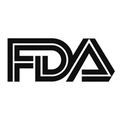FDA Approves Trilaciclib to Reduce Chemotherapy-Induced Bone Marrow Suppression for ES-SCLC
The FDA has approved trilaciclib (Cosela) as a first-in-class agent to help reduce the frequency of chemotherapy-induced bone marrow suppression in adults receiving chemotherapy for extensive-stage small cell lung cancer.

The FDA has approved trilaciclib (Cosela) as a first-in-class agent to help reduce the frequency of chemotherapy-induced bone marrow suppression in adult patients receiving chemotherapy for extensive-stage small cell lung cancer (ES-SCLC).1
Trilaciclib is believed to protect bone marrow cells from being damaged by chemotherapy by inhibiting CDK4/6.
“For patients with extensive-stage small cell lung cancer, protecting bone marrow function may help make their chemotherapy safer and allow them to complete their course of treatment on time and according to plan,” said Albert Deisseroth, MD, PhD, supervisory medical officer in the Division of Non-Malignant Hematology in the FDA’s Center for Drug Evaluation and Research, in a statement. “Today’s approval of Cosela will give patients a treatment option that can reduce the occurrence of a common, harmful side effect of chemotherapy.”
Approval for trilaciclib was based on findings from 3 randomized, double-blind, placebo-controlled trials in patients with ES-SCLC comprising a total of 245 patients. The patients were randomized to receive either trilaciclib infusion or placebo prior to chemotherapy. In terms of efficacy, the studies looked at rates of severe neutropenia and the duration of severe neutropenia during the first cycle of chemotherapy.
Across the studies, patients who received trilaciclib had lower rates of severe neutropenia and shorter durations of neutropenia in comparison with those who received placebo.
The 3 double-blind, placebo-controlled phase 2 studies explored trilaciclib in adult patients with ES-SCLC, and these included the G1T28-02 (NCT02499770), G1T28-05 (NCT03041311), and G1T28-03 (NCT02514447) trials, and analysis included patients treated with trilaciclib (n = 123) or placebo (n = 119). Data from the 3 trials were pooled and presented at the 2020 North America Conference on Lung Cancer.2
Pooled data showed that trilaciclib prior to chemotherapy compared with placebo significantly reduced the need for supportive care interventions in the management of severe neutropenia and grade 3/4 anemia induced by chemotherapy in patients with ES-SCLC. The reductions were irrespective of growth-colony stimulating factor (G-CSF) administration.
The pooled analysis also demonstrated that fewer and less frequent hospitalizations were required for chemotherapy-induced myelosuppression or sepsis in patients with ES-SCLC who received trilaciclib versus placebo.
In the G1T28-02 study, patients with newly diagnosed ES-SCLC received trilaciclib at 240 mg/m2 or placebo IV, both daily, prior to chemotherapy on days 1 to 3 of each 21-day etoposide/carboplatin IV cycle. In the G1T28-05 trial, patients with newly diagnosed ES-SCLC received either 240 mg/m2 of daily trilaciclib or placebo before chemotherapy on days 1 to 3 of each 21-day cycle of etoposide/carboplatin/atezolizumab (Tecentriq) cycle for up to 4 cycles, followed by single-agent atezolizumab without trilaciclib/placebo every 21 days. For G1T28-03, patients with previously treated ES-SCLC in the second- or third-line setting received trilaciclib at 240 mg/m2 or placebo daily prior to topotecan at 1.5 mg/m2 IV daily on days 1 to 5 of each 21-day cycle.
Fewer patients in the trilaciclib arm had severe neutropenia or grade 3/4 anemia compared with the placebo group, and a reduction with supportive care interventions was observed. In cycle 1, the median duration of severe neutropenia was 4 days (P < .0001) and only occurred in the placebo arm. Overall, 11.4% in the trilaciclib arm and 52.9% of the placebo arm had severe neutropenia. The percentage of patients on trilaciclib versus placebo who had G-CSF administration was 28.5% and 56.3%, respectively (P < .0001), and the rates of grade 3/4 anemia were 20.3% and 31.9%, respectively (P = .0279).
Overall, 14.6% of patients on trilaciclib versus 26.1% of those on placebo had red blood cell (RBC) transfusions on/after week 5, and 1.5% and 3.1% of patients, respectively, had an event rate per 100 weeks of RBC transfusions at this time point (P = .0027). A total of 3.3% of patients on trilaciclib and 11.8% of those on placebo received ESAs (P = .0252).
Overall, 4.1% of patients in the trilaciclib arm experienced hospitalizations due to chemotherapy-induced myelosuppression or sepsis, which was significantly less than in the placebo arm (13.6%; P = .0088). The incidence of hospitalizations due to these events was 0.94% of patients on trilaciclib and 5.7% on placebo (P = .0055). The percentage of patients with all-cause hospitalization were similar at 24.6% with trilaciclib and 25.4% in the placebo arm, and incidence occurred in 8.44% and 11.98%, respectively.
The most common adverse events observed with trilaciclib include fatigue; reduced levels of calcium, potassium, and phosphate; increased levels of aspartate aminotransferase; headache; and pneumonia. Interstitial lung disease, acute drug hypersensitivity, and injection site reactions are possible with trilaciclib.
Trilaciclib is also being explored in the treatment of patients with metastatic triple-negative breast cancer and metastatic colorectal cancer as well.
References
FDA Approves Drug to Reduce Bone Marrow Suppression Caused by Chemotherapy. FDA. February 12, 2021. Accessed February 12, 2021. https://bit.ly/2NqMuaU
Ferrarotto R, Anderson I, Medgyasszay B, et al. Trilaciclib reduces the need for growth factors and red blood cell transfusions to manage chemotherapy-induced myelosuppression. J Thorac Oncol. 2021;16(suppl 4):OA03.08. doi:10.1016/j.jtho.2020.10.026